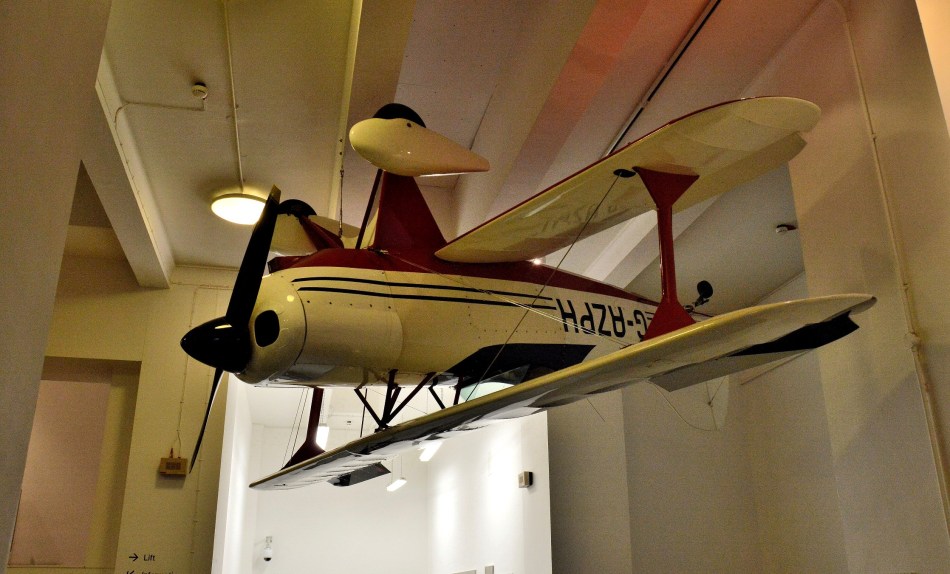Science Museum London
22 pics. The Natural History Museum⇐, Science Museum and fabulous Victoria & Albert Museum⇐ are all close together and very near South Kensington underground rail station. All are free to enter, although a small donation is usual, and have picnic areas (a wise choice).
It is advisable to download/save/print the museum map⇒. Their website is here⇒ and of special interest are the beautiful antique timepieces⇐ and the model steam engines⇐.
During the early 1700’s there was a developing energy crisis. Coal was needed to fuel industry, especially the smelting casting and forging of iron. Surface coal was becoming rare and deep mines were subject to flooding. Pumping out by hand or animal power was inadequate so Newcomen invented the Atmospheric Engine around 1712 and they continued as the only kind of steam engine until 1802.
The Atmospheric Engine filled a cylinder with steam at normal pressure which then condensed and reduced to less than atmospheric pressure. The external atmospheric pressure then pushed the piston into the cylinder, drawing the beam down and lifting the water pump at the other end. The age of the industrial revolution advanced along with our dependence on fossil fuels.
The one above was built in 1791 and continued in use for 127 years.
Later, a more powerful type of pressurized steam engine, which pushes a piston along a cylinder, was developed by James Watt in 1802. This one powered a workshop and later an electrical generator.
The earliest practical steam locomotive was designed by Richard Trevithick in 1804 and used for the transport of coal. The Puffing Billy, above, was built by William Hedley.
George Stephenson built the Locomotion for the Stockton and Darlington Railway which was the first public steam railway in the world. It was his son, Robert Stephenson, who built the famous and more successful Rocket in 1829.
Then innovation took off in leaps and bounds.
.
Steam driven pumping became another essential for the advancement of human civilization by the provision of clean water and removal of waste. Both were essential for the limitation of disease. You might like a look at the beautifully ornate Crossness Pumping Station ⇐ and the awesome machines at the London (Kew) Water and Steam Museum ⇐.
.
These developments were aided by the invention of the Bessemer Converter in 1856. Molten iron, refined from iron ore in a Blast Furnace, is poured into the vessel and then air followed by oxygen is forced through the molten metal. This was the first method of removing impurities on a large economic scale to produce steel.
The great gout of fire that spouts from the converter is awesome and can be seen on video by clicking on Bessemer Steel Making at Workington Cumbria⇒.
.
Meanwhile there had been a need to produce accurate mathematical tables for engineers, astronomers, navigators etc. After around 25 years of trying, Charles Babbage created the Difference Engine No 2. Whilst it can only add and subtract, it can be programmed do so a number of times, hence it can multiply and divide. Modern computers use the same method.
This clever little device can automatically weave a complex design using a series of punched cards for instruction. That is, a programmable process. Punched cards were used by early computers.
And then :-.
Well alright its early days yet.
Amy Johnson was the first person to fly solo from Britain to Australia, although in several legs. If you click on twice to expand, you might notice an AA (Automobile Association) sticker just beneath “Jason”. Now that’s what I call optimism.
And then:-
.
.
Normal service will be resumed when Grommet gets back from the chip shop. 🙂
And then :-
.
.
.
And then:-
This suspended globe in the Science Museum turns and changes to show the weather patterns and day and night. At times it shows the vast number of lights we are burning.
Please click on twice to expand the small print.
.
Fossil fuels have been the foundation of our modern world and all of its benefits. Knowing no better, we have used a crude and poisonous medicine, we now have to evolve to stop the increasingly damaging side-effects. Considering all that mankind has done, surely we can manage this too.
.

























A really interesting post! I want to go and see Puffing Billy for myself now 😛
LikeLike
February 8, 2016 at 00:44
It must have been quite a sight with all those rods and levers waving about. 🙂
LikeLike
February 8, 2016 at 16:07
They just don’t make ’em like they used to 😉
LikeLiked by 1 person
February 12, 2016 at 00:36
Great shots! This is one of my favourite museums.
LikeLike
February 9, 2016 at 13:54
Glad you enjoyed. The clock museum was moved into the science museum last year. Just posted and hope you enjoy that too. 🙂
LikeLike
February 9, 2016 at 21:06
Reblogged this on Hello Creatives Times and commented:
I plan to reblog your post in my blog https://hellocreativestimes.com. Since you have enabled reblogging on your post, I am assuming that you are allowing others to reblog this post. However, if you have any objection to reblogging your post, please let us know as soon as possible. Thank you.
🙂
LikeLike
September 30, 2016 at 04:51
That’s fine and I hope your readers enjoy. 🙂
LikeLike
September 30, 2016 at 11:54
Regarding your final statement, one hopes…before it’s too late.
LikeLike
October 27, 2016 at 12:36
Me too. The human race seems to play brinkmanship with everything. Its just a matter of trying to limit the damage. 🙂
LikeLike
October 27, 2016 at 17:14